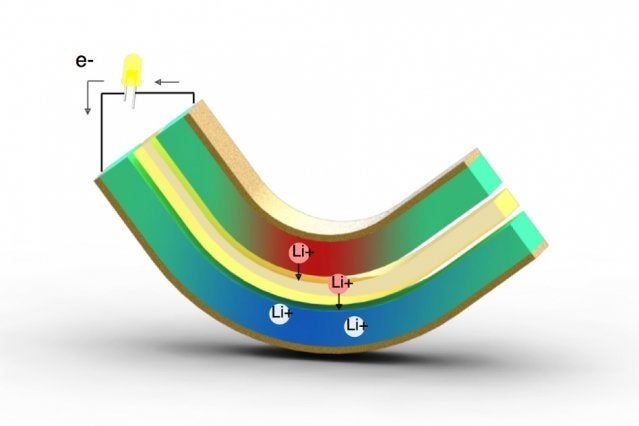
You may soon be able to kill two birds with one stone and generate clean energy from simple body movements.
Last week in the journal Nature Communications, MIT professor Ju Li, along with his graduate students Sangtae Kim and Soon Ju Choi, announced a new device that can harness the energy of "small bending motions" for electrical power.
Their prototype device is a stamp-sized strip that can be attached to wearable devices to generate power from activities like walking and pushups.
But their prototype won't be able to charge up your devices just yet; it is still at just 0.6 percent of its maximum efficiency. "In order to get this to 100 percent, we believe the electrode design needs to be improved," Kim told HuffPost. "Once we get a 10-fold increase, to about 6 percent efficiency, you will be able to charge a cellphone while walking."
Kim says one could put the device inside shoe soles or embed them within pavements; either way, pressing on the apparatus would generate energy.
The beauty of their discovery, said Kim, is that it takes advantage of action that already takes place naturally to generate clean energy. "The energy of human motion has not been fully utilized," he said. "This device will make it possible to harvest some of this otherwise-wasted potential into electricity. This may be especially useful when machines are not readily available for energy generation, like in rural area or in emergency situations."
And why did the researchers cite "bending," specifically? Bending represents "human-scale" activities like walking or exercise, Kim explained. Previous devices for turning motion into energy required very high-frequency movement that only a machine could perform. Now, thanks to their research, ordinary human activities can do the same.
The cost of previous motion-to-energy devices has also been prohibitively expensive on a large scale. But Li's new device relies on lithium ions, which are cheap and flexible. You wouldn't even feel it if it were part of a wearable device, said Kim. He said they have already been contacted by four startups: one in power bands, two in the biomedical field (including a drug delivery patch for diabetes), and one in the energy market.
"Many biomedical devices require batteries to be replaced every time they run out. But our device harnesses energy from its environment, so it's not limited by something like battery life," said Kim.
Also on HuffPost:

